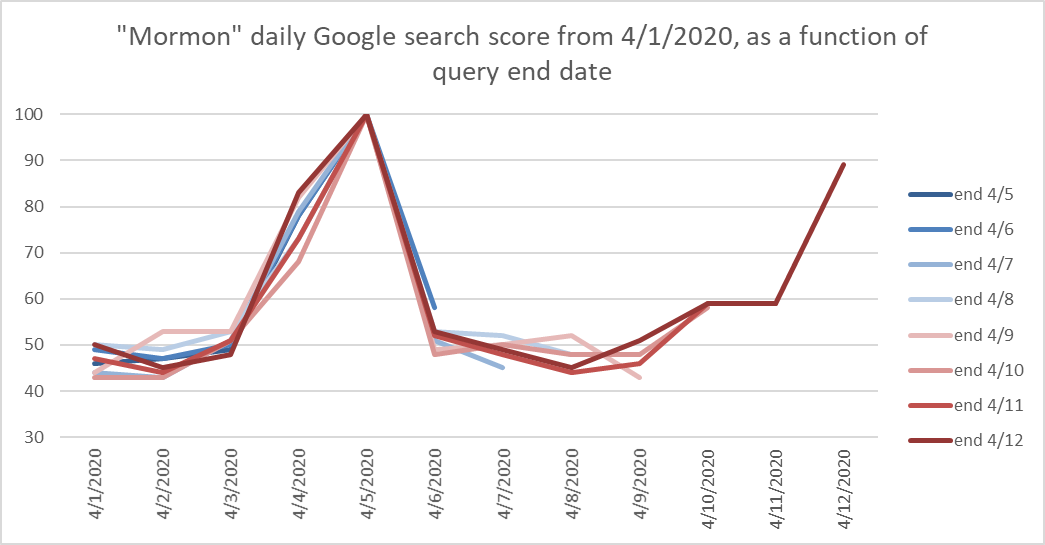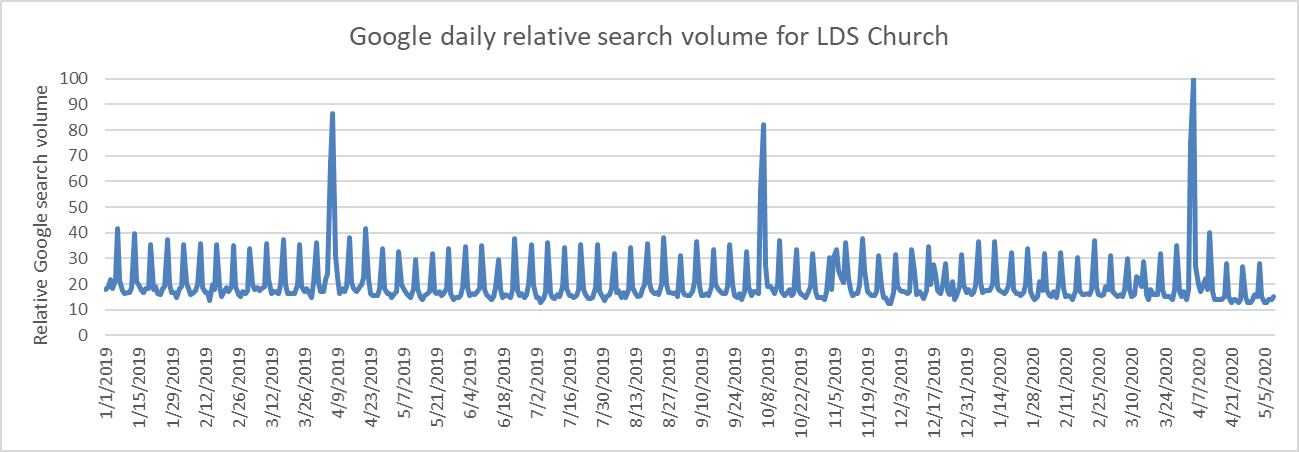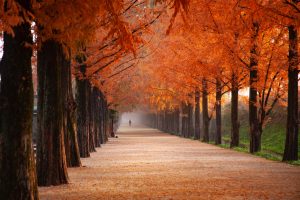How has interest in different churches changed during the coronavirus pandemic? This is a question that occurred to me while I was working on my last couple of posts where I looked at Google Trends data about the LDS Church in particular.
In this post, I’ve gathered Google Trends data on a bunch of different churches and I’ll show daily 2019 vs. 2020 comparisons for each one. I’m only making comparisons to Christian churches, and my list is pretty US-centric, both because I went with what I was most familiar with. Here’s the complete list, along with what Google Trends categorizes each as. Note that I went with what looked like a high-volume search term for each church or denomination, so for example for Methodists I chose the United Methodist Church, but for Baptists, which represents lots of different churches, even the biggest organizations (e.g., Southern Baptist Convention) had far lower volume, so I just went with “Baptists.” In addition to traditional denominations and fringe groups like us and the Jehovah’s Witnesses, I included a couple of big megachurches because I understand they’ve been growing a lot relative to the old mainline denominations. I’ve ordered them as fringe groups first, followed by mainstream ones sort of from high (more ritual) to low (less ritual) (based on nothing more than my sense of them), with the megachurches at the end.
| Church or belief (Google trends suggested term) | Google trends category |
|---|---|
| Church of Jesus Christ of Latter-day Saints | Church |
| Jehovah’s Witnesses | Denomination |
| Seventh-Day Adventist Church | Denomination |
| Catholic Church | Church |
| Eastern Orthodox Church | Church |
| Episcopal Church | United States (I guess to differentiate from Anglican churches in other countries?) |
| Lutheranism | Church |
| Presbyterianism | Church |
| United Methodist Church | Denomination |
| Baptists | Church |
| African Methodist Episcopal | Church |
| Pentecostalism | Following |
| Lakewood Church | Church in Houston, Texas |
| Saddleback Church | Topic |
As commenters on my first post pointed out, in the particular case of the LDS Church, there are reasons to doubt that this is that good a measure of interest in the Church. And what I found in my second post supported that, with far different results for a search term used by members of the Church versus by non-members. Given that difference, with all these other churches that I’m far less familiar with, who even knows what other complications I’m overlooking? There are probably a lot, but I think the data are fun to look at anyway if you just keep your truckload of salt handy.
Also, while I’m bringing up reasons to be leery of the Google Trends data, let me show you something about their scaling that makes me a little crazy. I noticed when I accidentally moved the end date of a time series one day forward or back that it changed the whole rest of the series, rather than just omitting the day in question. This suggests to me that the scaling to 100 that the help mentions isn’t all that Google Trends is doing. Rather, it’s aggregating a bunch of data and probably smoothing it together with some kind of model under the hood.
Here, let me show you what I’m talking about. The graph shows daily results for worldwide searches for “Mormon” from April 1 of this year through different ending days.











 only if it is preceded by a disclaimer that their use does not imply any endorsement of the Church or its priesthood by the Hostess Corporation.
only if it is preceded by a disclaimer that their use does not imply any endorsement of the Church or its priesthood by the Hostess Corporation.






